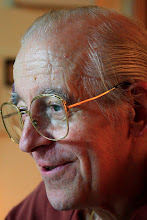Before last spring, and in spite my large experience with the mountain in Italy, I was a novice climber here in Korea who only frequented Mount Kwanak (冠岳山, 관악산, Kwanaksan, 632 m) in Seoul, but thanks to the magic left in myself after the visit at the Mount Sorak (雪嶽山, 설악산, Soraksan, 1 708 m) I challenged myself to traverse Mount Chiri (智異山, 지리산, Chirisan). It was last spring when I decided I would try to climb Chonwang Peak (1 915 m), the highest point on Mount Chiri. But when I got there, I found out that Mount Chiri is completely different from Mount Sorak. If Sorak is a seductive, charming mistress, Chiri is a chaste lady you cannot easily approach. Even after endless peaks and valleys, it still did not open up to me. In the end, I gave up at Poksoryong Pass and felt like a loser.
 Mount Kwanak (632 m)
Mount Kwanak (632 m)
The descent was lonely and pathetic. As I walked down the 6.4-kilometre path from Poksoryong Pass, I had a chance for some self-reflection. I felt embarrassed that I had tried to climb Chonwang Peak without an adequate traning. If it was my destiny to go up and down but never reach the top, it was not fate but a natural consequence of my slack efforts.
 Mount Sorak (1 708 m)
Mount Sorak (1 708 m)
I have been thinking about that time a lot lately while watching the outcry of those denouncing greed and corruption in America spread around the world. The Occupy Wall Street movement that began a couple of months ago has escalated into global demonstrations in over 1 500 cities, including Seoul. The ‘losers’ representing the 99 percent who cannot bear the cruelty of financial capitalism have risen up against the ‘winners’ representing the remaining 1 percent.
The members of the young generation, who have degrees yet still cannot find jobs, may be feeling like losers. They may also feel they are being deceived when told that they can succeed if they study hard and are diligent. It is no wonder they feel that way. It has been reported that 75 percent of Korean citizens feel that Korean society is unfair. After all, most citizens believe that they cannot succeed with effort alone and need other tactics to get ahead. Unless the haves start sharing their wealth and society starts giving the have-nots a second chance, capitalism may be faced with a serious crisis.

Mount Chiri and Chonwang Peak (1 915 m)
After trying to climb the mountain and failing, I acknowledged that being a loser was not an entirely bad thing. If I had not been one, I would never have enjoyed the luxury of walking down the scenic path of Mount Chiri all by myself. Nevertheless, I refuse to end my life as a loser because I want to see the innermost beauty of Mount Chiri again someday.
Giorgio Olivotto
Photo by Giorgio Olivotto
Seoul, Korea
November 6, 2011












